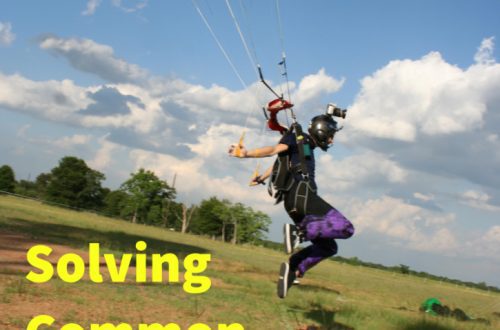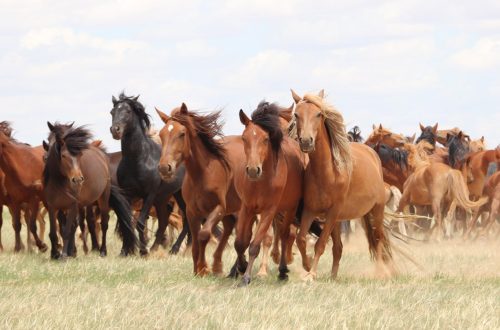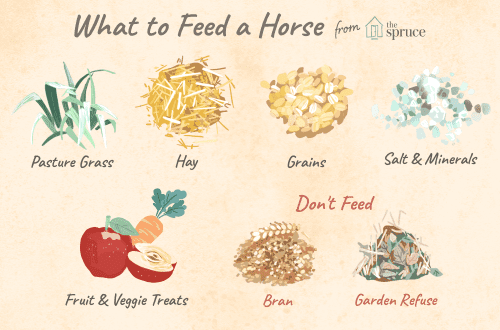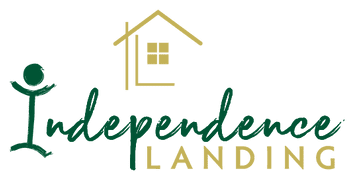
Independent landing – what is it and how to achieve it?
Independent landing – what is it and how to achieve it?
An independent seat is an invariable requirement for a good rider. But what exactly does this term mean? What needs to be done to achieve an independent landing?
So, what independent landing?
When the rider has an independent seat, this means that he can follow the movements of the horse, remaining in balance, without looking for support in the form of a rein / saddle / horse’s mane. He is able to control the position of his legs and work them as he sees fit without changing their position on the side of the horse. Speaking of an independent seat, we also mean the ability to control the horse (maintain contact) without on her the impact of the occasion.
Why is the occasion usually used?
- some riders use it to maintain balance, including at the posting trot;
- the rein helps to control the forward movement of the horse if it loses balance;
- it is used to achieve a collection, a half-halt, a downward transition, etc.;
- the reins are trying to contain the multidirectional forces that arise when the horse enters the turn without bending in the body and without bringing the legs under the body. If the outside hind leg of the horse steps out, then the outside rein is incorrectly used. The same thing happens when working on lateral movements;
- The occasion is also used to get the so-called “correct head position” from the horse. This creates the illusion of putting the horse on the reins.
All of the above rein use options slow down the process of developing an independent landing and prevent interaction between horse and rider, known as “work on the bit”.
This is because in order for the seat to have the right effect on the horse – to promote the longitudinal stretch of the horse (the horse engages the hindquarters, rounds and stretches the neck forward, neck forward, lifts the back), the rider must be able to correctly connect to the relaxed movements of the horse. .
To understand this, imagine the flow of water in a river. If you decide to go with the flow in your boat, and a dam is installed somewhere, then you will have to abandon your idea – there will be no flow. In the case of the horse, the holding hand blocks the flow of motion and the longitudinal stretch of the horse, which is one of the most important elements of riding.
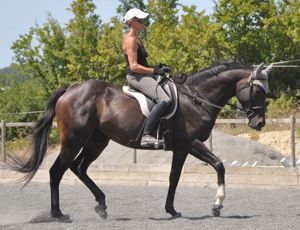
That is why independent landing is so important. If you decide to give up rein control, you will need to replace it with something else. And that something will largely be an independent landing. It will not only help you feel confident while riding, but also balance the horse’s movements.
Axis in action
Any mechanism, be it a clock or a rider and a horse, has a certain core, an axis around which the whole system moves. The rod is stable and prevents the system from disintegrating into separate components during movement. It also allows for leverage, which generates movement and power. The same principle applies to a car: the wheels are on axles that provide the transmission of movement to the engine.
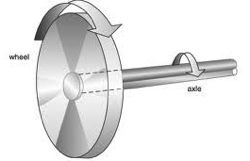
The pivot in the horse-rider system is the independent seat, which allows both elements of the system to touch in the right places.
Unfortunately, the main rod is often exactly the reins – everything starts to rotate around them. This can be effective if the rider wants to hold onto and control the horse by roughing it up with force, but this approach blocks the front of the horse (through the bit) and therefore blocks the circular flow of its energy.
For correct interaction with the horse, the rod must be located precisely in the seat and legs of the rider, this is the central point of union between the rider and the horse, around which movement can flow unhindered, just like a wheel rotates around its axis. There is no rod in the hands!
The difference in how you feel when using one or the other rod is enormous: in the first case, if the rod is in the reins, you will not be able to maintain balance without using the reins. In the second case, when the rod is in the seat, you feel one with the horse and at any moment you can drop the reins without risking losing control of the horse or balance. Of course, while riding, the rod can move from the seat to the arms, depending on the rider’s ability to maintain the correct dynamics, but it cannot be in two places at the same time.
You can train the eye by watching the riders to determine where the rod is. Interestingly, its position is difficult to determine while the horse is moving, which is why excessive rein work often goes unnoticed in dressage competitions.
A rider with an axle on the rein will inevitably lose touch with the horse’s movements. Sometimes this becomes obvious: the rider is kicked off the saddle, or he wobbles back and forth at every pace. Sometimes the rod on the rein is not so noticeable. In this case, you can notice the tension in the horse’s movements, as the use of the reins blocks his forward movement.
Separately, we note: we do not want to say that any work by reason harms fruitful work with the horse. Only using it as a limiter!
Proper rein handling involves creating a soft contact that allows energy from the horse’s hindquarters to travel through the horse’s back to the reins and back into the rider’s hand.
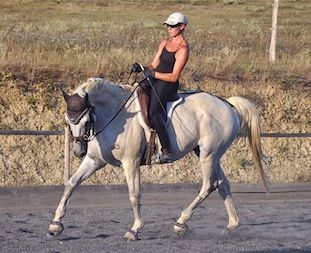
If the pivot is in the seat and legs of a rider who has achieved an independent seat, you will be able to observe unity in movement. Horse and rider move and work as a single organism. In this case, you can loosen the reins (as in the photo above) without risking disturbing the stability and balance of the ride.
How to achieve an independent landing?
An independent landing can be developed if several basic conditions are met:
1. Proper positioning of the pelvis so that it can interact with the horse, supporting his movements.
2. Strengthening the rider’s core muscles to keep his pelvis in the correct position.
3. Stretching the muscles of the lower part of the rider’s body, which ensures good grip with the saddle and accompanies the movements of the horse with the seat.
All this will remain impossible until the rider stops looking for support in the rein – just as a child cannot learn to swim while holding on to the side of the pool.

Many riders are unable to let go of the rim because they do not understand how to properly position the pelvis in relation to the horse in such a way that real impact on the horse is possible without rein control. Their pelvis is positioned in such a way that it prevents the horse from moving instead of supporting it.
For this reason, an indispensable way to develop an independent fit is lunging for no reason. It allows the rider to take his mind off the need to control the horse and focus on his body – he no longer needs to look for support – a rein.
In observing our students, we noticed that many of them at first could not relieve themselves at the trot without the support of the reins, with which they were accustomed to pulling their body up from the saddle. And, surprisingly, some of them have been quite successful in competitions before.
Working on the formation of the correct fit is a long and painstaking process, during which strength, flexibility and muscle memory are developed. You must not only sit yourself in a position in which you are uncomfortable and uncomfortable, but also learn to accompany the movements of the horse in such a position and influence them. This is how the bond between rider and horse will be formed, which will eventually become a powerful tool in your work. Due to the complexity and length of the learning process, as well as the patience required, a truly independent landing in today’s sports community is rare. Alas. Perhaps if dressage testing included an assessment of the independence of the seat, which involved demonstrating the ability of the couple to work on a free rein while maintaining balance in three gaits, the trend would begin would change…
Translation by Valeria Smirnova (source).



